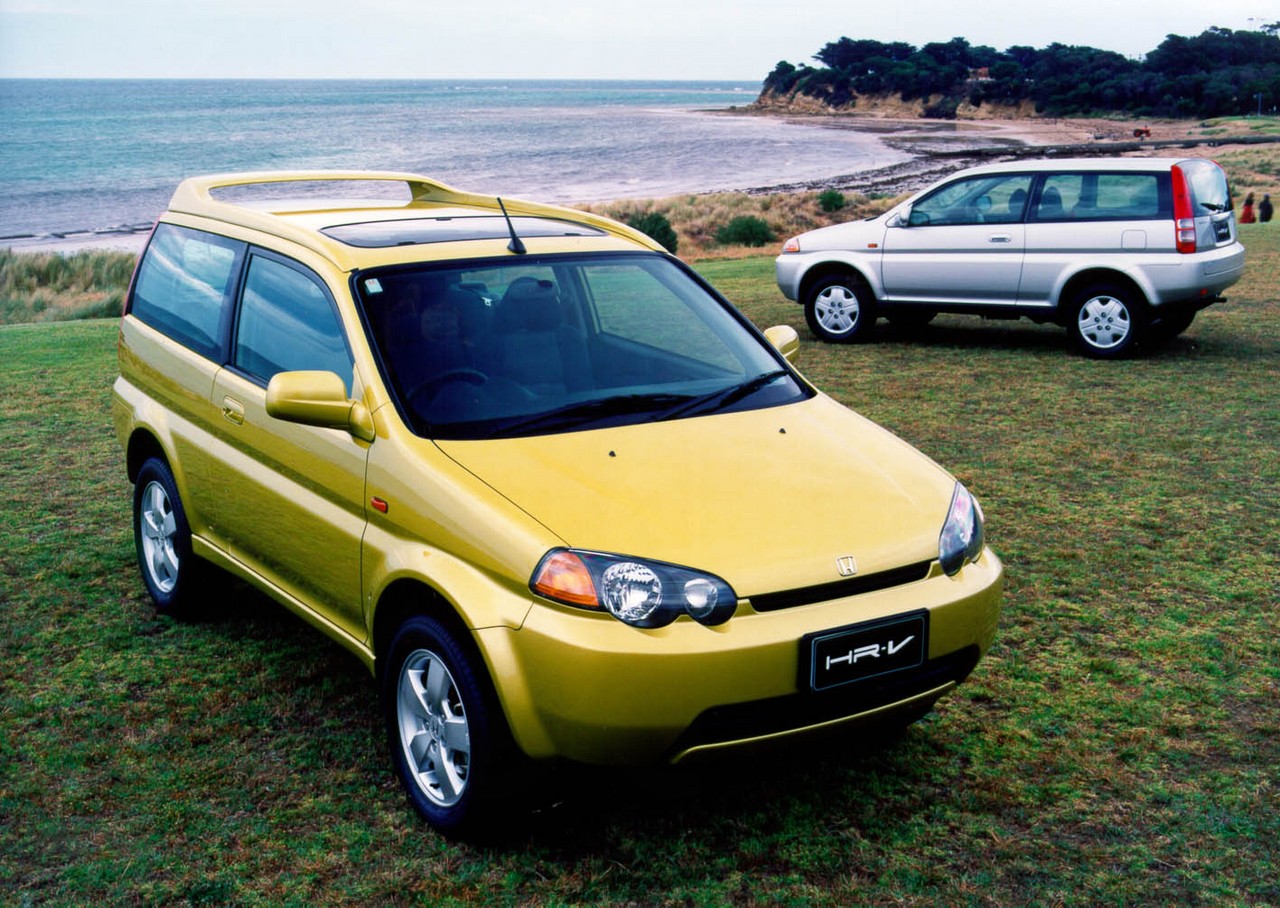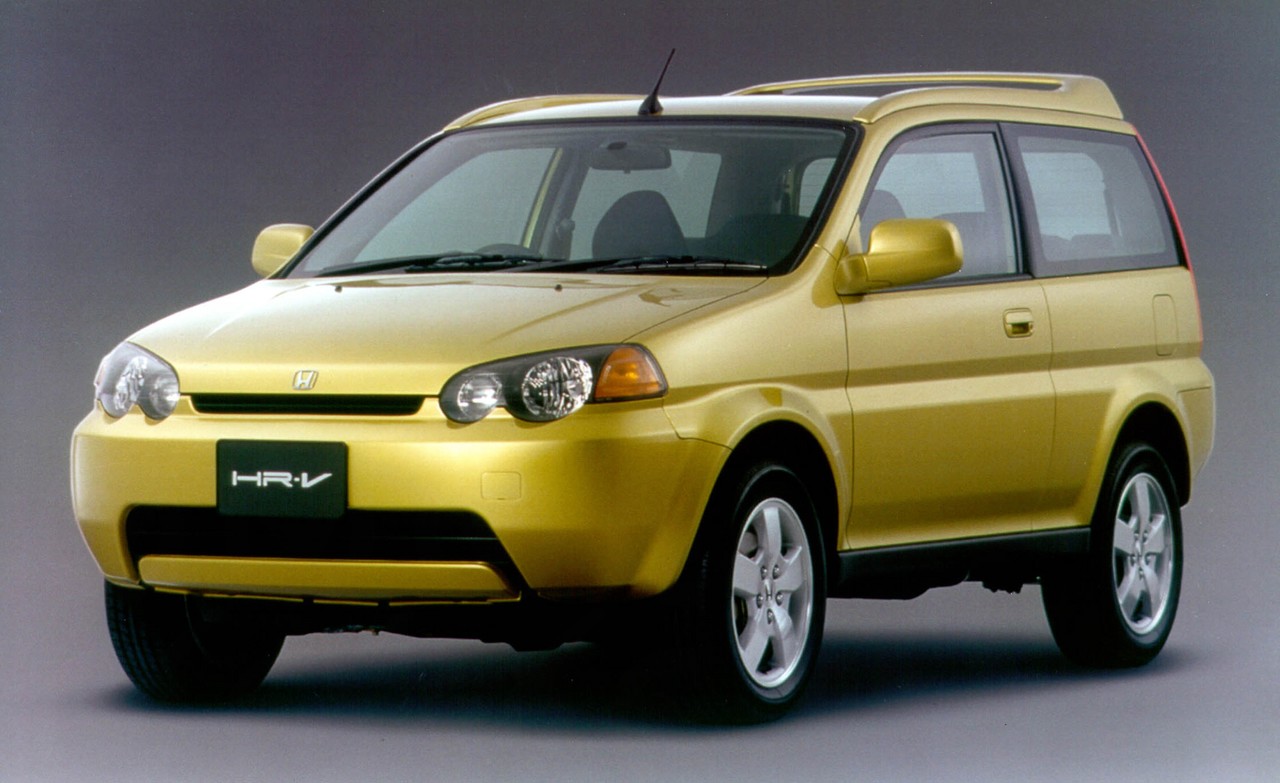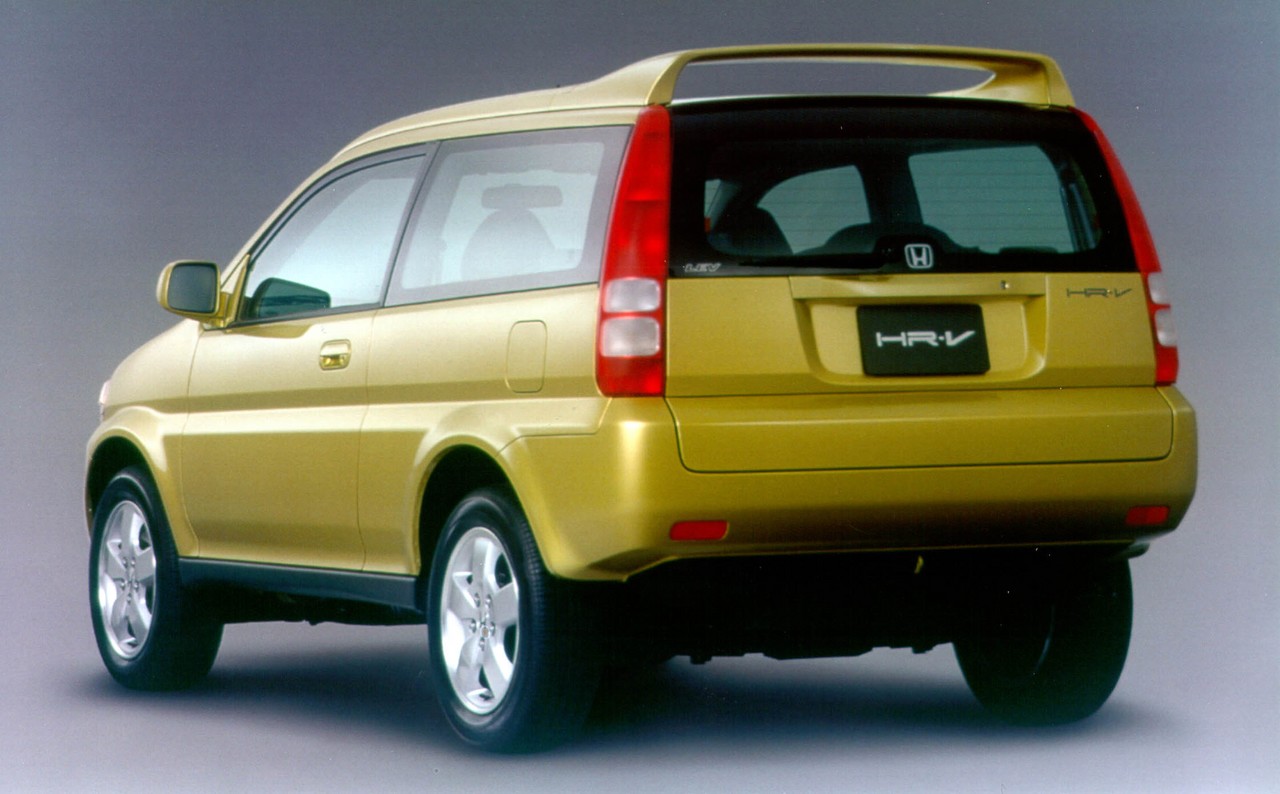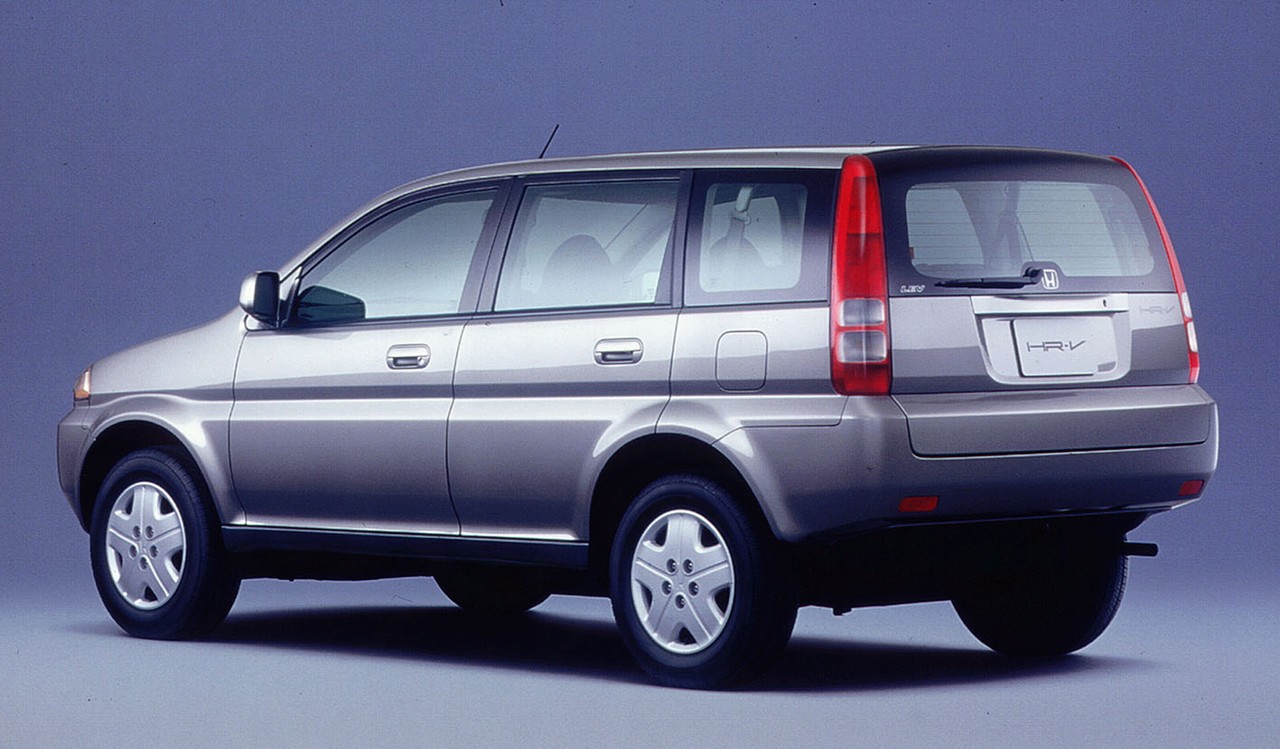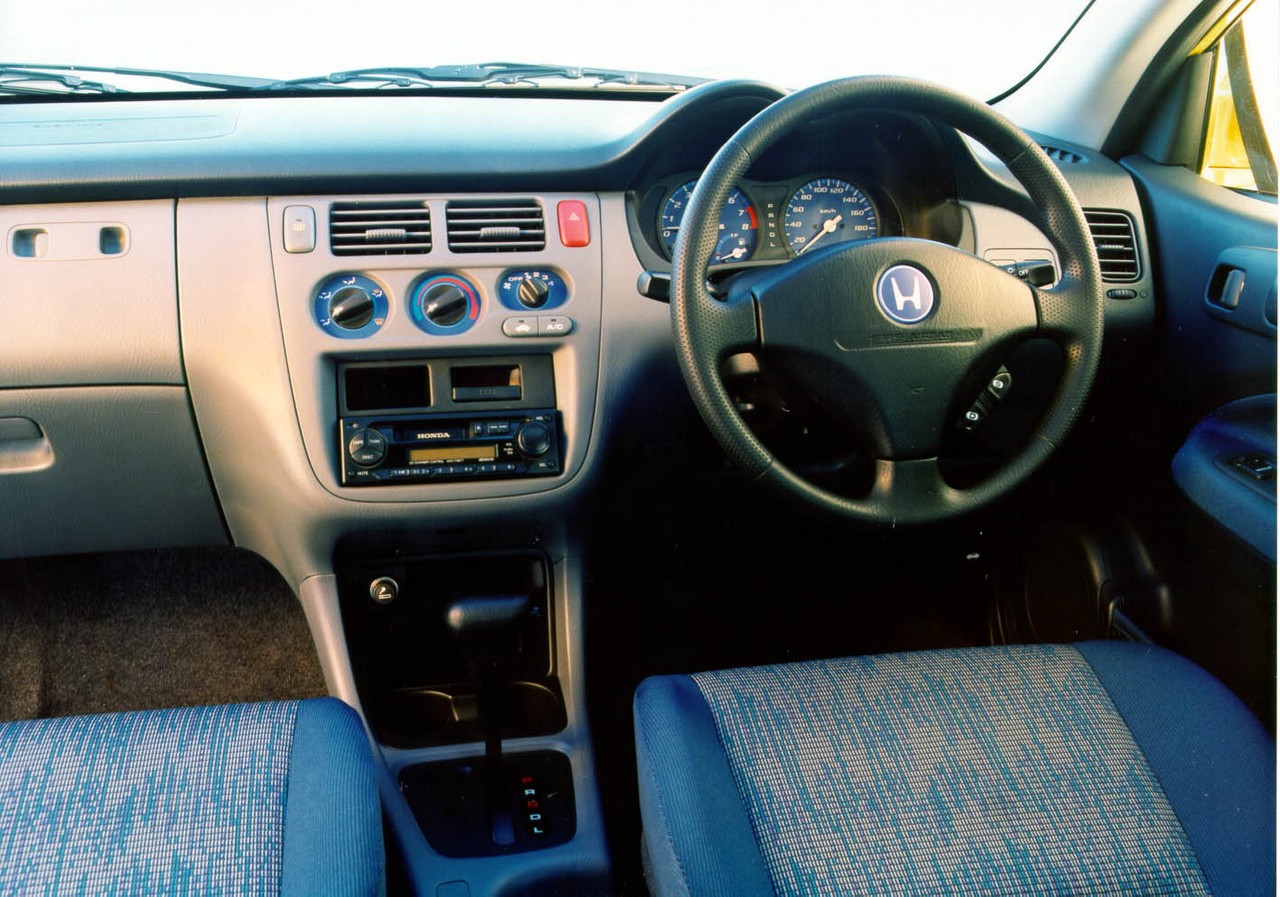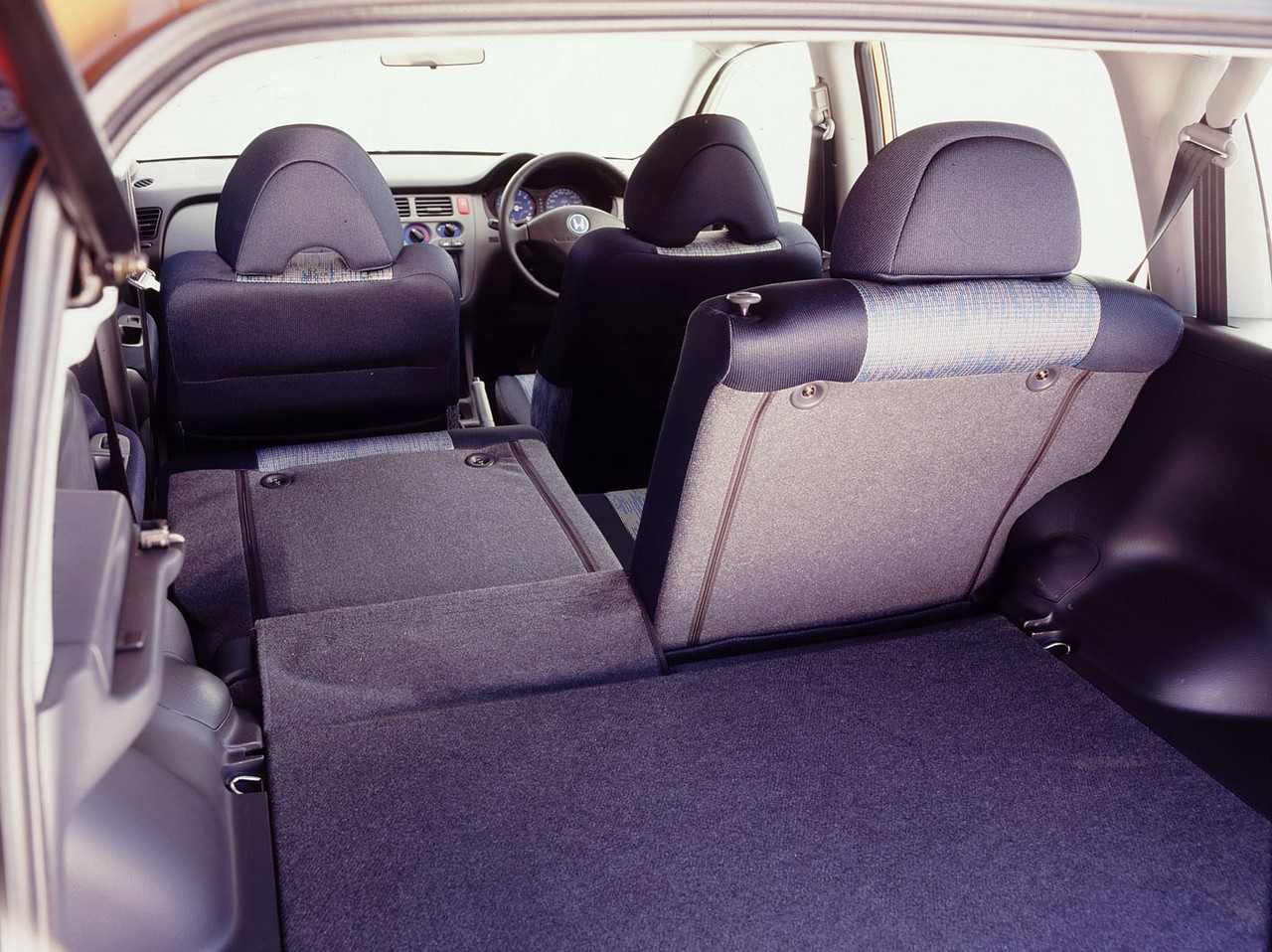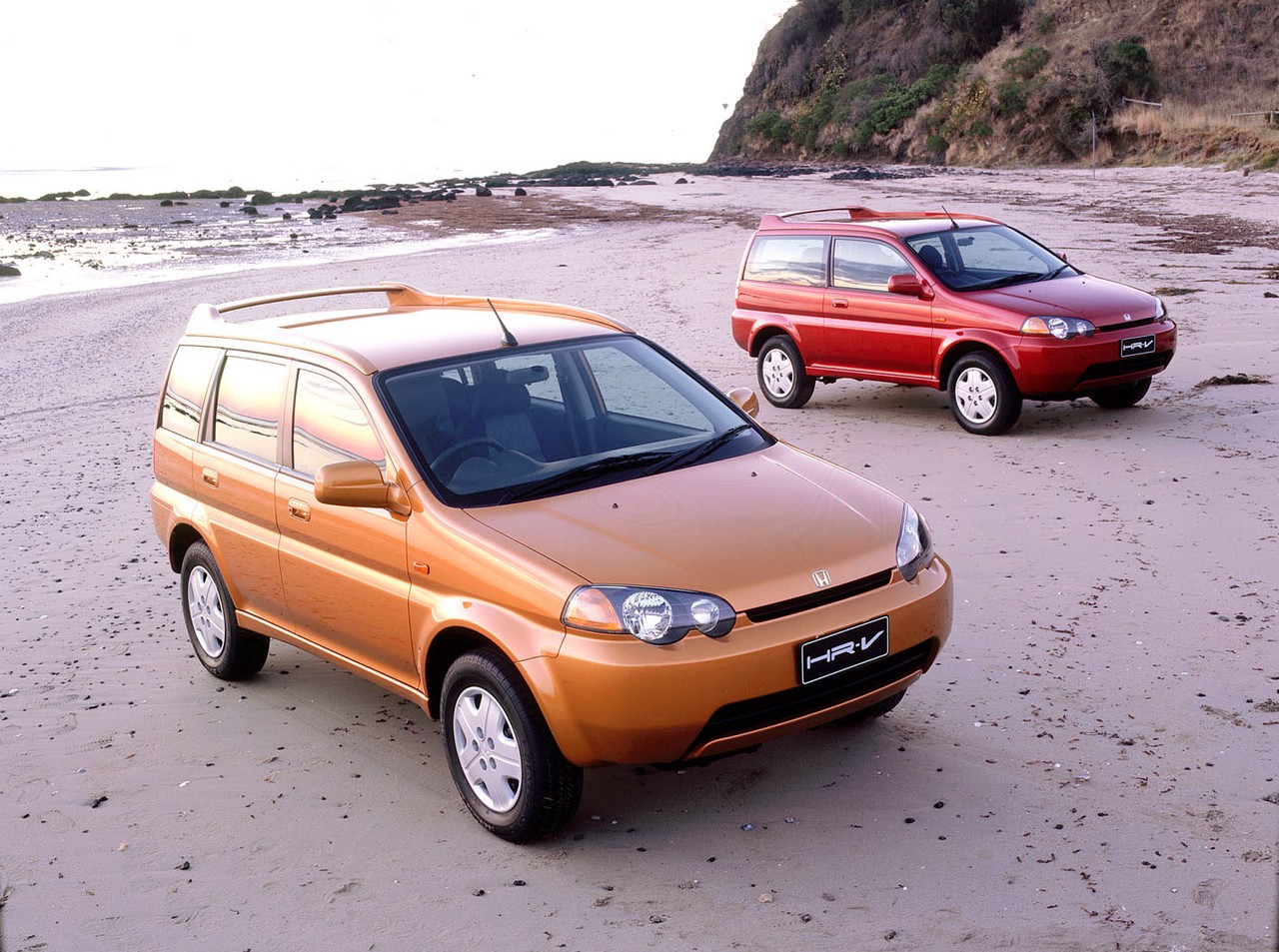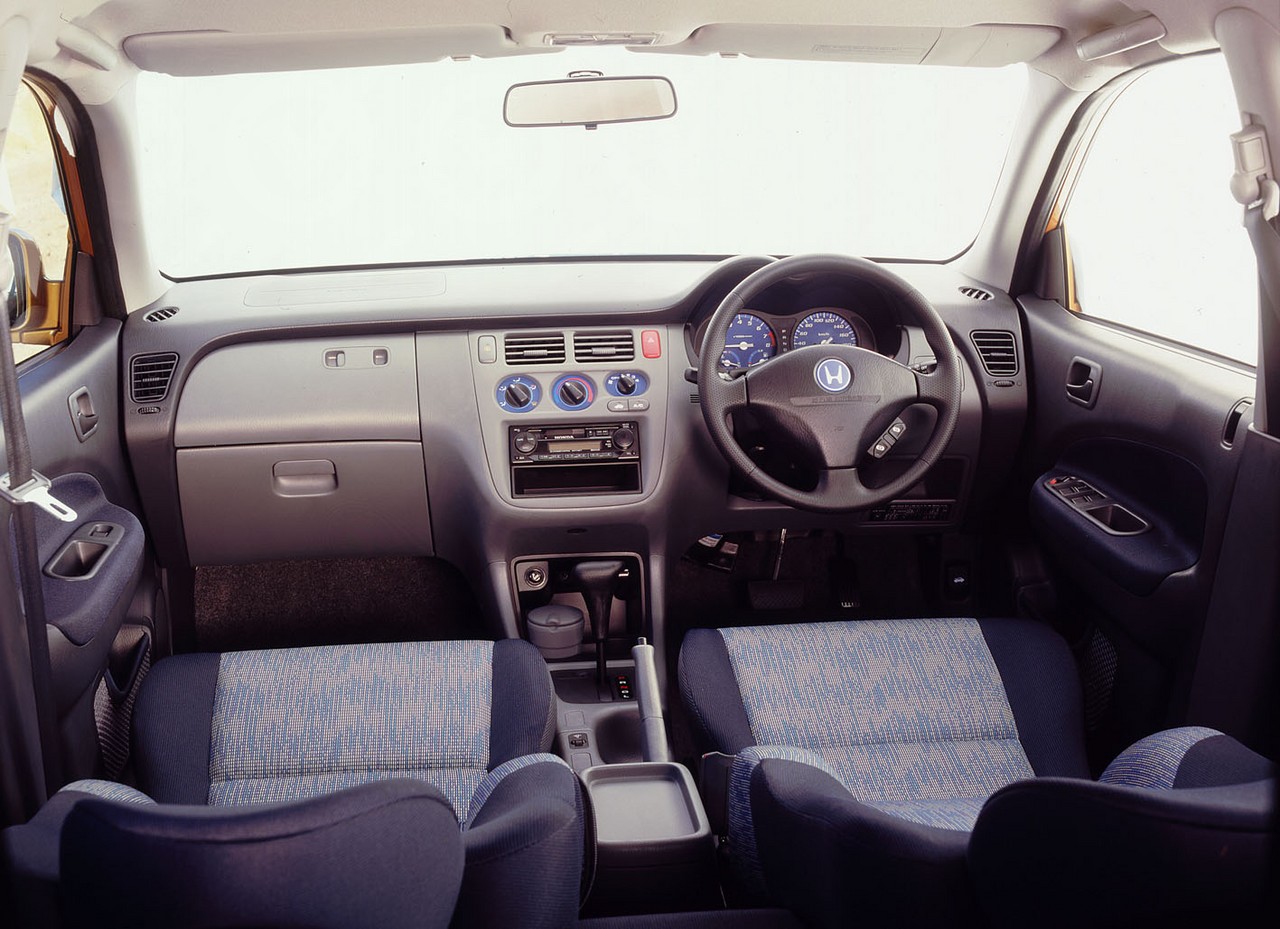
- Elevated driving position
- Low emissions powertrain
- Poorly damped rear suspension produces unsettled ride
- 1.6-litre engine only adequate
- Cabin lacks sound insulation
- Flat seats lack support
- Thick A-pillars limit visibility
- Cramped rear seats
Overview
Released in February 1999, the HR-V was a front-wheel drive, compact SUV (literally, ‘High Rider Vehicle’). Manufactured in Suzuka, Japan, the all-wheel drive HR-V initially available in a three-door body (the GH2 HR-V), though five-door models (the GH4 HR-V) followed in March 2000.
D16W1 engine
The 1.6-litre D16W1 petrol engine had a single overhead camshaft, four valves per cylinder and a compression ratio of 9.6:1; transmission options consisted of either a five-speed manual or continuously variable transmission (CVT).
Dimensions and suspension
The three-door HR-V was 3995 mm long, 1695 mm wide, 1590 mm tall and had a 2360 mm long wheelbase; ground clearance was 190 mm. The five-door models, however, were 110 mm longer (at 4105 mm) and had a 100 mm longer wheelbase (2460 mm). Furthermore, the HR-V had MacPherson strut front suspension and five-link De Dion-type rear suspension.
| Body | Variants | Years | Engine | Trans. | Peak power | Peak torque |
|---|---|---|---|---|---|---|
| 3dr | [Unnamed] | 1999-01 | 1.6-litre petrol I4 | 5sp man., CVT |
77 kW at 6200 rpm | 138 Nm at 3400 rpm |
| Sport | 1999-00 | |||||
| 5dr | [Unnamed] | 2000-01 |
‘Real Time’ AWD
The HR-V was fitted with a dual-pump ‘Real Time’ all-wheel-drive system which used a multi-plate clutch. In normal conditions, drive was directed to the vehicle’s front wheels. In the event that the front wheels experienced slip, a dual pump system – which was integrated with the rear differential – would generate hydraulic pressure and engage the clutch to direct up to 50 per cent of the engine’s torque to the rear wheels (i.e. for a 50:50 front:rear torque distribution). Under braking, however, the dual pump system would disengage to allow the ABS system to operate.
Safety equipment
Standard safety equipment for the HR-V included dual front airbags and front seatbelts with pretensioners and three-point load limiters; the Sport variants were also fitted with ABS and electronic brake force distribution.
Features
Standard features for the HR-V included a two speaker sound system with radio and cassette player, central locking, power windows and mirrors, a tilt adjustable steering wheel and an immobiliser. Beyond this, the Sport variants added 16-inch alloy wheels, a sunroof, keyless entry, roof racks, roof rails and a roof-mounted spoiler.
With the introduction of the five-door models in March 2000, standard features across the range were improved to include a four speaker sound system, remote keyless entry and roof spoiler. Compared to the three door models, the five door models were also fitted with 50/50 split and folding rear seats, rear heater ducts and a rear parcel tray.
1999 HR-V Indy Special editions
In October 1999, limited run Indy Special editions were released; compared to the standard HR-V, the Indy Special editions were also fitted with air conditioning.
Related links
